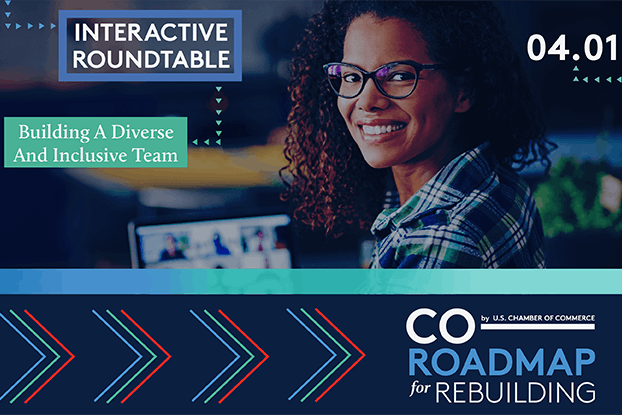
As more companies think through and revise how they approach diversity, there are numerous issues to work through. What are the best ways to be more inclusive in the interview process? Should your company create a committee to address diversity gaps? How do you better educate people on the issues?
These topics and more were covered at the latest CO— Roadmap Roundtable. Event host Jeanette Mulvey, content director at CO—, spoke with Natasha Porizkova, diversity, equity and inclusion (DEI) manager at Nika White Consulting, about the best practices for hiring a diverse workforce, ideas for creating an inclusive firm and more.
Here are some of the biggest takeaways from the conversation.
Understanding the differences between diversity, equity and inclusion
The conversation started with a primer on the differences between diversity, equity and inclusion — which are all uniformly different concepts that are important for business owners and managers to understand.
Porizkova summarized the three terms as such:
- Diversity: Diversity is passive and simply a point at which things differ. It typically means showcasing different aspects that include age, race, gender, sexual orientation, socioeconomic status, religious beliefs and education level. Diversity is about bringing unique things to the table.
- Inclusion: Inclusion is an action and takes intentionality. It’s about bringing people together and leveraging differences to make sure everybody feels included. Diversity is just being fair, but inclusion is being asked to participate.
- Equity: Equality and equity are two different things, but many people use the words interchangeably. Equality is giving everyone the same thing and equity is giving people what they need. An example of this would be equality is giving everyone a shoe, and equity is giving everyone a shoe that fits.
When we think about hiring people who look like us or who have similar backgrounds, then we start to create that homogenous culture. We want to have diverse perspectives and that’s not leveraged enough in business.
Natasha Porizkova, diversity, equity and inclusion (DEI) manager, Nika White Consulting
The problem with candidates being a good ‘culture fit’
Porizkova said a common problem with the job interview process is suggesting that only candidates with a “good culture fit” should be considered.
“When people say, ‘Oh, you’re a culture fit,’ it's usually intended to be a compliment,” Porizkova said. “But actually, within the scope of the DEI, it’s about trying to push people to think about culture adds, not culture fits. … When we think about hiring people who look like us or who have similar backgrounds, then we start to create that homogenous culture. We want to have diverse perspectives and that’s not leveraged enough in business.”
Perform ‘stay interviews’ to better gauge progress
One suggestion Porizkova made for all employers to create “stay interviews” as opposed to only performing job interviews and exit interviews. Stay interviews can help determine how people are doing in their jobs and how the company is performing.
“We do exit interviews, and we do internal interviews, but we don't do stay interviews to say, ‘How are you doing, what do you need, what are you struggling with, and what do you need to succeed?’ It’s another way to be more connected with people below you but still able to check in and make sure that they're doing okay as a human and not just a resource.”
Create a diversity committee
Another important task for companies working to improve DEI is to create a “diversity committee” that can assess where the business is today and where it needs to be in the future. But building a committee should be done in the right way, with about 15 people from different backgrounds.
“It's not about tokenism, so we don't want to go out and [invite one Black person, one Asian person, and one LGBTQ person],” Porizkova said. “What we want to do is make a call out to all employees, and say, ‘We are going to create a council, and we want to be able to make better changes for the organization, identify our weaknesses and find opportunities for growth.’”
Porizkova recommends encouraging people to submit themselves, or submit others with their consent. “From there, look at who has applied and identify people who can serve as decision makers. … Start by saying what we want to accomplish in our first 90 days, and what are going to be the hurdles to getting those things done.”
The three things business owners can do now
When it comes to simple things for business owners to do to be more thoughtful managers, Porizkova suggested three things.
- First, work to constantly educate yourself and read books about diversity and inclusion to better understand the topics.
- Join community calls and seminars that discuss these topics in more detail.
- Add pronouns such as “she/her/hers” to your Zoom account, email signature or LinkedIn account.
CO— aims to bring you inspiration from leading respected experts. However, before making any business decision, you should consult a professional who can advise you based on your individual situation.
Follow us on Instagram for more expert tips & business owners stories.





